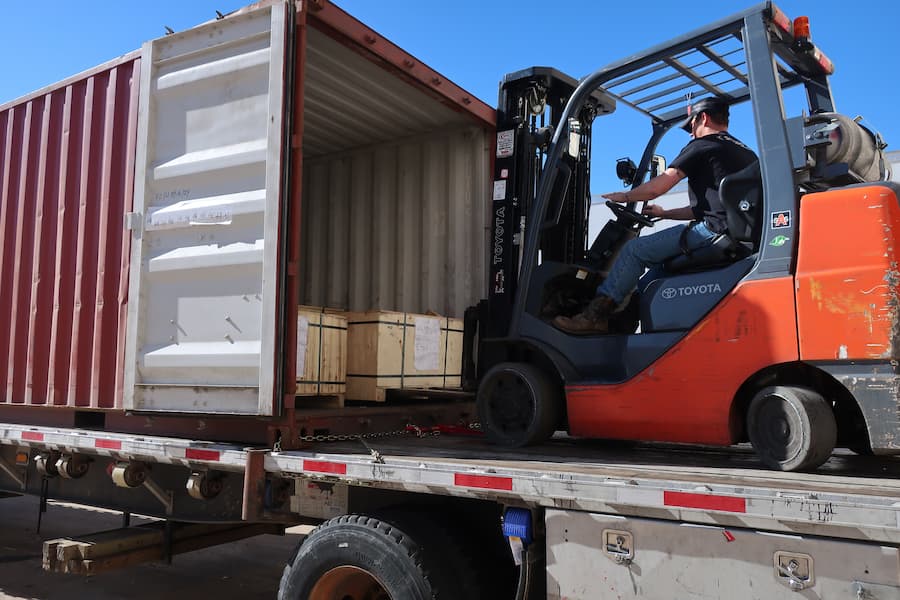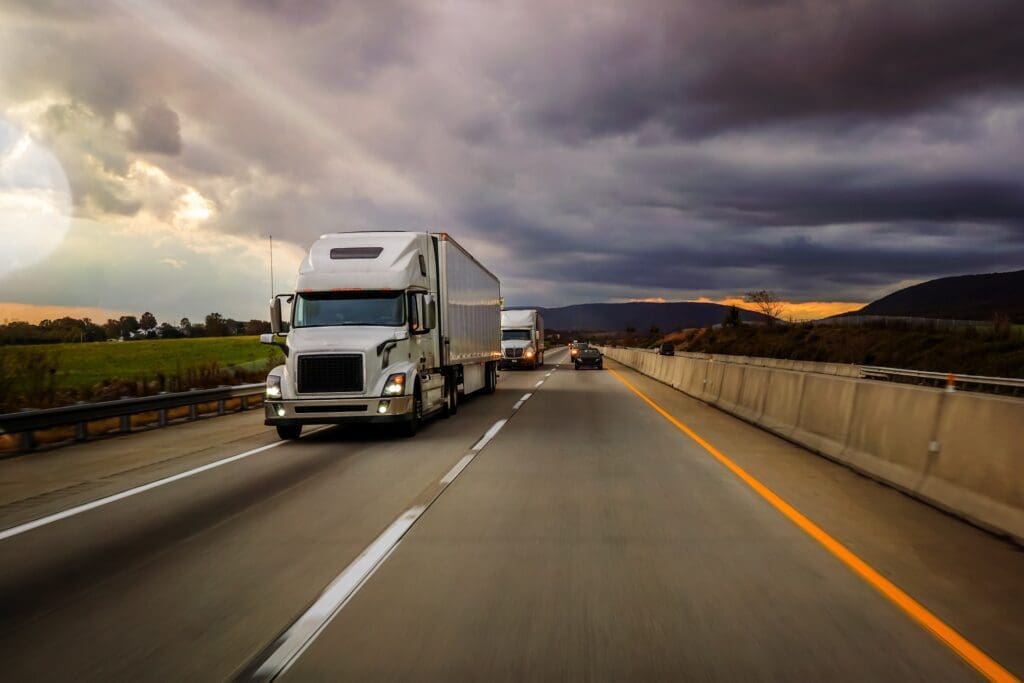From autonomous trucks to smart warehouses, robots are powering up the logistics industry. They’re also tackling one of the industry’s toughest issues: last-mile delivery.
Transporting goods the last mile to end-users has never been easy, especially with large, unwieldy, or time-critical deliveries. But until recently, last-mile delivery mostly involved consumers expecting parcels. Now, e-commerce buying habits have spread from individuals to the B2B sector, and Amazon-era e-consumers want quick (and cheap) delivery.
And the e-commerce explosion is just beginning. According to Statista, e-commerce businesses are expected to grow by 265%, from $1.3 trillion in 2014 to $4.9 trillion in 2021. And with this explosion comes a delivery dilemma: how to satisfy end-users demands for the speedy delivery of goods in the face of a shrinking truck driver pool and tougher regulations in urban areas. As Fed Ex’s Ted Dengel said to an audience at the Robotics & AI Summit & LiveWorx ’18, ”We previously delivered 12 shirts to a shop in a mall. Now, we’re making 12 deliveries to residences — the economics are very different.”
Robots to the Rescue
Robots make sense when it comes to delivery. They can deliver items more quickly than humans, they don’t have to deal with traffic or parking, they’re more environmentally friendly than a fleet of trucks or vans, they cost less than a minimum wage worker, and they don’t mind working evenings or weekends. And they could work especially well in last-mile delivery since more than 60% of merchants’ customers live within three miles of a store location.
But aren’t we years away from delivery bots? No. Robots from UK-based Starship Technologies have been delivering food and office supplies to employees at the Intuit in Mountain View campus in Silicon Valley for more than three years. The six-wheeled delivery bots use sensors, computer vision systems, and GPS systems to navigate. They get their “orders” at a central hub and make deliveries (up to 20 lbs.) all across Intuit’s 4.3-acre campus. The robots operate in any kind of weather, can drive over curbs and avoid barriers and people. In January, Starship announced the delivery of 25 robots to George Mason University in Virginia, where the bots are delivering orders from Starbucks, Blaze Pizza, and Dunkin’ Donuts. Northern Arizona University became another bot delivery customer in March, and Starship plans to expand its robot delivery fleet to grocery stores and parcel delivery companies.
Though Starship may have the first delivery bots on the ground, there is a whole pack of robots right behind them:
First deployed in 2017 at UC Berkeley, Kiwibots will soon be found on 15 more campuses, including Harvard, MIT, and Stanford. The Columbia-California-based company boasts that its food delivery bots complete deliveries 65% faster than human couriers and earn a 4.6 star (out of 5) customer service rating.
FedEx Same Day Bot is hitting the road in US cities this summer as the company tests the bots’ capability with deliveries between selected FedEx Office locations. Like Starship’s bots, Fed Ex’s models have six wheels, but can carry up to 100 pounds and climb steps.
Amazon is also road-testing—or rather sidewalk-testing—delivery bots this summer. Amazon’s Scout, another six-wheeled model, looks a bit like a cooler on wheels. During the initial test phase in Snohomish County this year, human “ambassadors” are accompanying the bots on their rounds and doing the actual hand-to-hand delivery.
Humans are also on hand to help robots in Houston. Custom-built robotic vehicles from Silicon Valley startup Nuro have already been delivering groceries for Kroger and will begin pizza delivery for Domino’s later this year. Nuro’s robot cars, which look like small vans, are bigger than the other delivery bots being used right now, about half the length and width of a conventional passenger car, without space for a driver. As of now, human-controlled chase cars follow each robot vehicle, but Nuro hopes the robo-vehicles can begin delivering on their own later this year.
Ford’s new delivery robot Digit looks more like a person than the others being tested. Its humanoid design allows it to manage uncertain terrain, go up and down steps, and even react to being bumped without losing its balance and falling over. Still, in its prototype phase, Digit is designed to fold compactly into the back of a self-driving vehicle. That robotic vehicle also helps keep Digit lightweight and agile by sharing its “brain,” allowing the smaller bot to tap into the vehicle’s advanced sensors and heavy computing hardware.
Continental’s roboticized urban delivery system also utilizes autonomous electric vehicles to transport smaller, more agile delivery bots, which look a bit like large cargo-carrying dogs. The German company debuted its system, the Continental Urban Mobility Experience (CUbE), at January’s CES electronics show in Las Vegas.
Well-known companies like Segway and Toyota are also debuting delivery robots, along with tech start-ups like Marble, and Postmates
Others are taking robotics to the skies: Both Amazon and UPS recently unveiled delivery drones. But though their potential is huge in terms of speed and cost-savings, drones face other issues, like weight limits, weather issues, and acceptance by consumers.
This last issue could be a problem for land-based delivery robots, too, which is one reason companies are being cautious about timelines for implementing delivery bots on a big scale. Still, it seems certain that robots are here to stay: Global market research company Technavio expects the logistics robot market to grow 28% from 2018 to 2022.
Next Exit to the Rescue, Too
We’re here to stay, too. And though we don’t use robots (yet), we do use any means necessary to get your shipment where it needs to be, on-time. We’re also known for “rescuing” our customers: As specialists in mission-critical delivery and unusual and heavy equipment transport, we’ve learned how to ship almost anything, anywhere. At Next Exit, we earn the trust of our clients with efficiency, transparency, and security. In addition, we understand how to handle freight services for unusual, oversize, or overweight shipments and are certified to arrange the shipment of hazardous materials. To learn more about our services, call Next Exit Logistics at 866-624-2661 or contact us via email.




